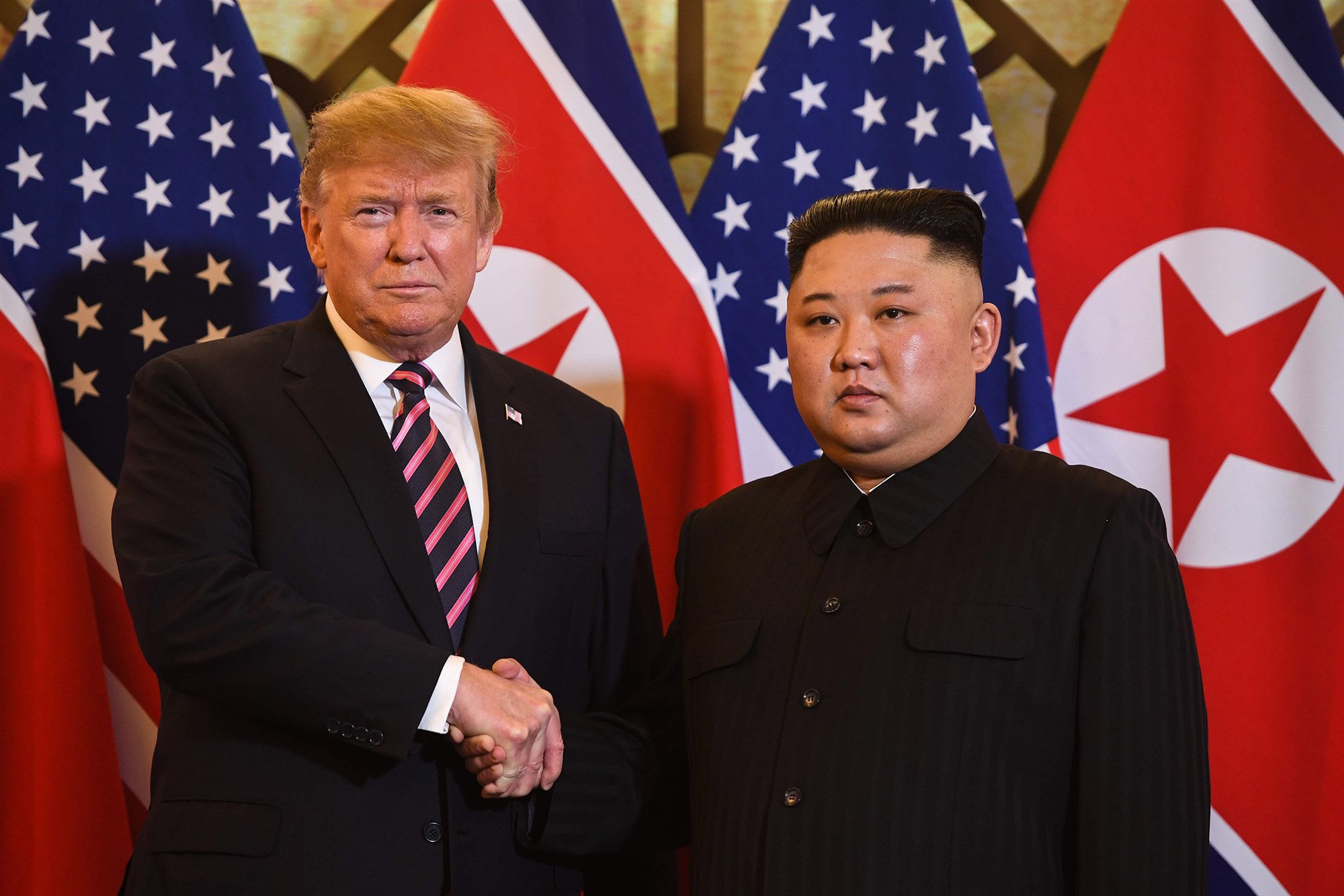
Picture Credit: AFP
When U.S. President Donald J. Trump met North Korean ruler Kim Jong Un in Singapore last June, the former real estate tycoon, who prides himself on his skills as a deal-maker, pitched to Kim a future of peace and prosperity for North Korea — if only the country would give up its nuclear weapons. The 4-minute video that Trump showed Kim on an iPad was filled with imagined images of a modern and rich North Korea should its leader make the right choice.
Judging by the outcome of the Singapore summit, the video appears to have had no impact on Kim, who has done precious little toward meeting Washington’s demands of complete, irreversible and verifiable denuclearization.
But that has not deterred Trump from trying another sales pitch. This time, instead of a slick video, Trump and his advisers wanted to show Kim the real thing — a country that fought a war with the U.S. but later transformed itself into a prospering economy by embracing capitalism and friendly relations with it. This is why Hanoi, the capital of Vietnam, was picked as the venue of the second Trump-Kim summit.
On the face of it, the choice of Hanoi makes sense. Kim is more likely to be impressed by a visit to a real, thriving country still ruled by a one-party regime than by a video exhorting him to do the right thing.
However, if Trump and his advisers believe that a suitable venue can help seal a historic nuclear deal with Kim, they need to think again.
They first ought to have some historical memory. North Korea’s Chinese comrades have tried the same tactic on Kim’s father, Kim Jong-il, to give up his nuclear program and focus on economic development. During the elder Kim’s rule, Chinese leaders Jiang Zemin and Hu Jintao invited him to visit China no less than six times. On one of those trips, they purposefully arranged for him to visit Guangdong, China’s most dynamic export powerhouse. Yet, Kim Jong-il did not return to Pyongyang a man with a changed vision for his country. If anything, he accelerated his nuclear armament program.
Another factor that the White House should consider is the fundamental difference in the historical and political circumstances between Vietnam in the mid-1980s and North Korea today. It was much easier for Vietnam to embark on a reformist path in the mid-1980s and later to seek rapprochement with the U.S. In those days, Vietnam was bleeding from fighting a low-intensity border war with China while simultaneously trying to maintain its occupation of Cambodia. Seeking peace with China and the U.S. was the smart thing to do; by ending its border skirmishes with China and withdrawing its troops from Cambodia, Vietnam was cutting its losses. In other words, Vietnam’s rapprochement with the U.S. required Hanoi to give up a strategic liability – its unsustainably costly occupation of Cambodia. It was an obvious choice.
By contrast, the Kim regime is being asked to surrender a strategic asset – a nuclear arsenal the family dynasty has built over three generations. Of course, many would argue that North Korea’s nuclear weapons are strategic liabilities because they would ensure Pyongyang’s international isolation and economic impoverishment. Such a view, unfortunately, ignores one crucial fact. International isolation is obviously undesirable, but without nuclear weapons as its ultimate guarantor of security, the Kim regime, which rules a country with a GDP of less than $30 billion, would not be secure or worth much. As for national impoverishment, its victims are almost exclusively ordinary people. Despite international sanctions and isolation, no members of the ruling elite in North Korea, least of all the Kim family, have suffered materially.
North Korea also differs from Vietnam in two critical respects. Vietnam may be ruled by a one-party state, but its ruling regime has not committed the same horrendous crimes against its own people as the Kim dynasty. This crucial fact has profound implications. Kim has far more to fear from his own people than Hanoi’s rulers. The risks that a little opening could unleash a revolution – a common occurrence in repressive dictatorships that try to be a little less tyrannical – are far greater in the case of North Korea. Since economic reform will necessitate greater contact with the outside world and freedom of movement at home, the regime will likely see a significant erosion of its capacity to control its population and a greater probability of domestic resistance.
Another reality that Kim is acutely aware of is the existence of a far richer and bigger South Korea. The economic opening of North Korea will mean its inevitable economic integration into South Korea, not the other way around. This is another nightmare scenario Pyongyang does not want to imagine. If the Trump administration thinks that Vietnam’s success can influence Kim’s calculations, the administration seems to have overlooked the fact that Vietnam achieved national unification with North Vietnam’s military conquest of South Vietnam in 1975. When Hanoi decided to open its doors to the capitalist world, it had no worries about being absorbed by its brethren to the south.
However naïve the Trump administration’s thinking behind the choice of Hanoi as the venue for its second summit with Kim, its efforts to seek a peaceful deal to denuclearize North Korea deserve our praise and support. But it is doubtful that a guided tour for Kim will do better than a 4-minute video in persuading him to part with his nuclear weapons.
